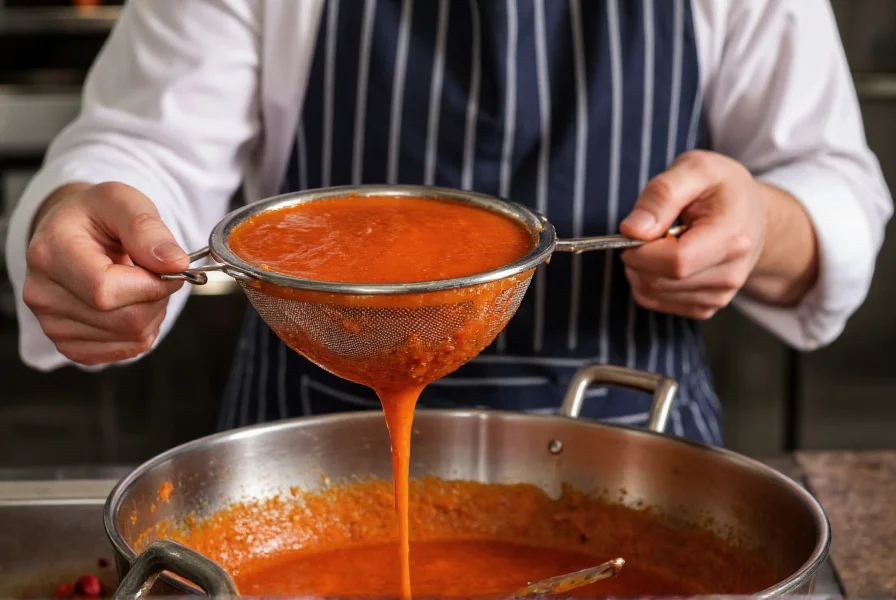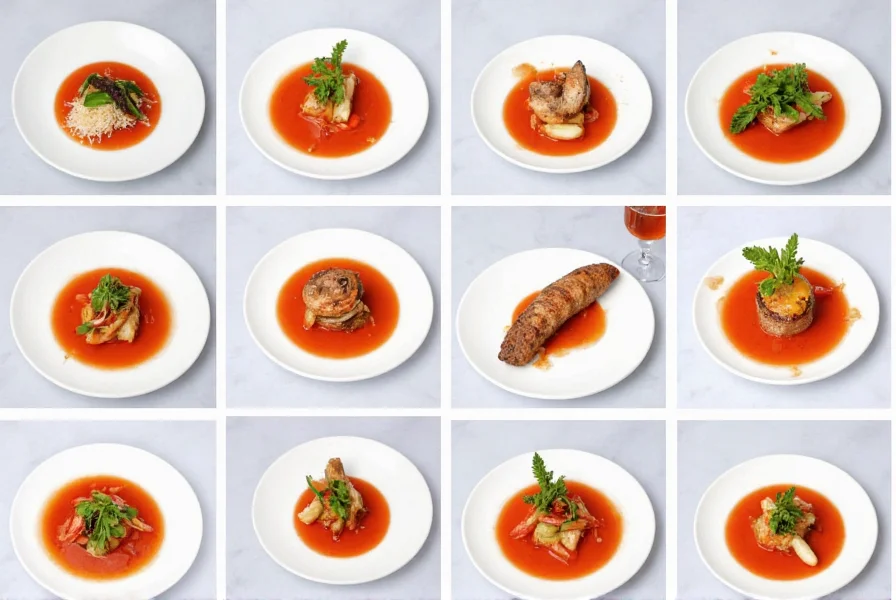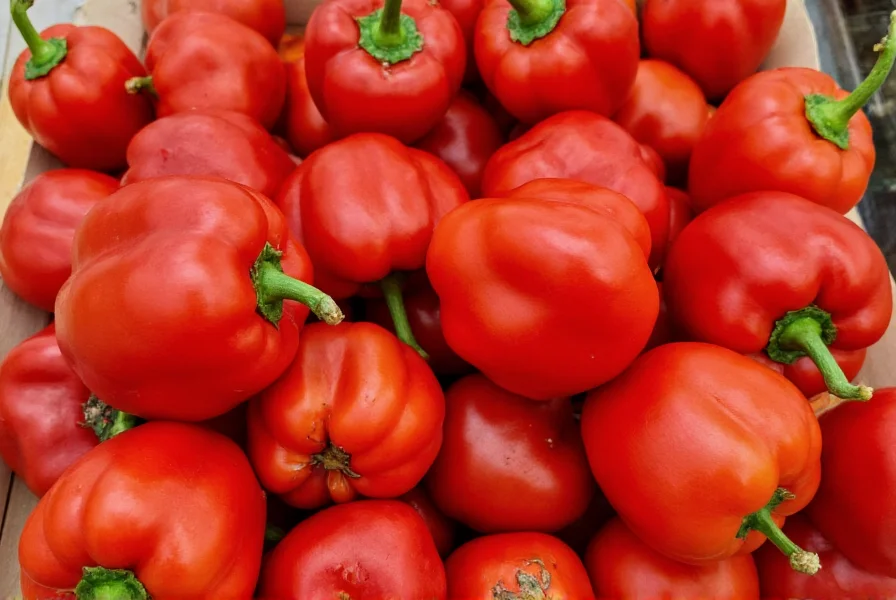Understanding this essential sauce begins with recognizing its fundamental role in elevating dishes from ordinary to extraordinary. Professional chefs and home cooks alike rely on red pepper coulis for its sweet, slightly smoky flavor profile and striking visual appeal. Unlike simple purees, authentic coulis undergoes careful straining to achieve its signature silky texture that distinguishes it from chunkier sauces.
The Culinary Heritage of Red Pepper Coulis
Originating in classical French cuisine, coulis traditionally referred to any thick sauce made from pureed vegetables or fruits. While tomato coulis gained early popularity, red pepper coulis emerged as a sophisticated alternative, particularly suited for delicate proteins. The technique spread through European culinary circles before becoming a staple in contemporary fusion cooking worldwide.
Essential Ingredients for Perfect Red Pepper Coulis
The magic of exceptional red pepper coulis lies in ingredient selection and preparation technique. For the best homemade red pepper coulis, prioritize these components:
| Ingredient | Function | Professional Tip |
|---|---|---|
| Red bell peppers (3-4) | Primary flavor base | Select deep red, fully ripe peppers for maximum sweetness |
| Shallot or yellow onion (1/4 cup) | Aromatic foundation | Shallots provide more delicate flavor than onions |
| Garlic (1-2 cloves) | Flavor enhancer | Roast garlic separately for milder, sweeter notes |
| Fresh thyme or tarragon (1 tsp) | Herbal complexity | Add herbs during cooking, not after pureeing |
| Good quality olive oil (2 tbsp) | Texture and richness | Use for roasting, not cooking the sauce |
| Lemon juice or sherry vinegar (1-2 tbsp) | Acidity balance | Add after cooking to preserve bright flavor |

Step-by-Step Preparation Guide
Creating restaurant-quality red pepper coulis requires attention to detail at each stage. Follow this professional method for consistently excellent results:
- Pepper preparation: Roast peppers over open flame or under broiler until skins blister and blacken (about 8-10 minutes per side). Place in covered bowl for 10 minutes to steam, then remove skins and seeds.
- Sweating aromatics: In saucepan, gently cook shallot in minimal oil until translucent (3-4 minutes). Add garlic and cook 1 minute more without browning.
- Building flavor: Add roasted peppers, herbs, salt, and 1/4 cup water. Simmer covered for 15 minutes to meld flavors.
- Pureeing: Transfer mixture to high-speed blender. Blend on high for 2-3 minutes until completely smooth.
- Straining: Press through fine-mesh sieve using rubber spatula. This critical step removes any remaining fibers for perfect texture.
- Finishing: Stir in acid (lemon juice or vinegar) and adjust seasoning. For richer coulis, blend in 1-2 tsp butter off-heat.
Common Variations for Different Culinary Applications
Adapt your red pepper coulis recipe based on intended use. These professional variations address specific culinary needs:
- For seafood dishes: Add pinch of smoked paprika and substitute fish stock for water during simmering
- For vegetarian entrees: Incorporate roasted red onions and a touch of maple syrup for enhanced sweetness
- For spicy version: Include 1 roasted poblano pepper or 1/4 tsp cayenne during pureeing stage
- For elegant plating: Reduce strained coulis by half for thicker consistency that holds decorative patterns
Perfect Pairings: What to Serve with Red Pepper Coulis
The versatility of red pepper coulis makes it suitable for numerous applications. Consider these professional pairing recommendations when serving:
- Proteins: Pan-seared scallops, grilled chicken breast, roasted duck, baked white fish, and lamb chops all benefit from the sauce's sweet contrast
- Vegetarian options: Elevates roasted vegetable platters, stuffed portobello mushrooms, and polenta dishes
- Breakfast applications: Modern chefs increasingly use it as an elegant alternative to ketchup with eggs Benedict or breakfast potatoes
- Plating techniques: Use squeeze bottle for decorative swirls, or spoon base layer and wipe plate edge for professional presentation
Troubleshooting Common Red Pepper Coulis Issues
Even experienced cooks encounter challenges with this seemingly simple sauce. Address these frequent problems:
- Too watery: Simmer strained coulis uncovered for 5-8 minutes to reduce, or add small amount of xanthan gum (1/8 tsp)
- Bitter flavor: Usually from over-roasted peppers or including white pith - ensure complete removal of seeds and inner membranes
- Grainy texture: Inadequate straining - always use fine-mesh sieve and apply firm pressure when pressing through
- Color fading: Exposure to air causes oxidation - store with plastic wrap pressed directly on surface, or add small amount of citric acid
Storage and Shelf Life Guidelines
Proper storage maintains both flavor and safety of your homemade red pepper coulis. Follow these professional recommendations:
- Refrigerate in airtight container for up to 5 days
- Freeze in ice cube trays, then transfer to freezer bags for up to 3 months
- Never leave at room temperature for more than 2 hours
- Reheat gently over low temperature to preserve fresh flavor

Mastering the Art of Coulis Making
Creating exceptional red pepper coulis requires understanding both technique and purpose. The best chefs treat this sauce not merely as an accompaniment but as an integral flavor component that enhances the entire dish. By mastering the balance of sweetness from perfectly roasted peppers, aromatic depth from properly cooked shallots, and bright acidity from well-timed acid addition, you'll develop a versatile culinary tool that elevates numerous dishes.
Remember that the quality of your ingredients directly impacts the final product. When selecting peppers, choose specimens with deep, uniform color and firm texture. Avoid those with wrinkles or soft spots, which indicate overripeness that can lead to off-flavors in your coulis. With practice, you'll develop an intuitive sense for the ideal roasting time and seasoning balance that transforms this simple sauce into a signature element of your cooking repertoire.
Frequently Asked Questions
Can I make red pepper coulis without roasting the peppers?
Yes, you can make red pepper coulis by simply boiling or steaming the peppers instead of roasting. However, roasting develops complex caramelized flavors through the Maillard reaction that boiling cannot replicate. For best results, always roast peppers when making traditional red pepper coulis.
How can I make my red pepper coulis thicker without changing the flavor?
To thicken red pepper coulis without altering flavor, simmer the strained sauce uncovered for 5-10 minutes to reduce excess liquid. Alternatively, add a small amount (1/8-1/4 tsp) of xanthan gum while blending, which thickens without affecting taste. Avoid using flour or cornstarch as they can create unwanted texture and flavor.
What's the difference between red pepper coulis and regular pepper sauce?
Red pepper coulis differs from regular pepper sauce primarily in texture and preparation. Coulis is always smooth and silky due to thorough straining, while pepper sauces often retain some texture. Coulis uses roasted peppers for sweetness, whereas many pepper sauces use raw or pickled peppers for sharper heat. Additionally, coulis serves as a delicate accompaniment rather than a dominant flavor element.
Can I use jarred roasted red peppers for making coulis?
Yes, high-quality jarred roasted red peppers can substitute for fresh when making red pepper coulis, though the flavor profile differs slightly. Drain jarred peppers thoroughly and rinse if they contain preservatives. Expect a more consistent but less complex flavor than freshly roasted peppers. For best results, enhance jarred pepper coulis with additional fresh garlic and herbs during preparation.
Why does my red pepper coulis separate when I store it?
Red pepper coulis separation occurs due to natural settling of components. The oil rises to the top while water-based elements sink. This is normal and doesn't indicate spoilage. Simply stir gently before use. To minimize separation, ensure thorough emulsification during blending and consider adding a small amount of xanthan gum (1/8 tsp) which helps maintain consistency during storage.











 浙公网安备
33010002000092号
浙公网安备
33010002000092号 浙B2-20120091-4
浙B2-20120091-4